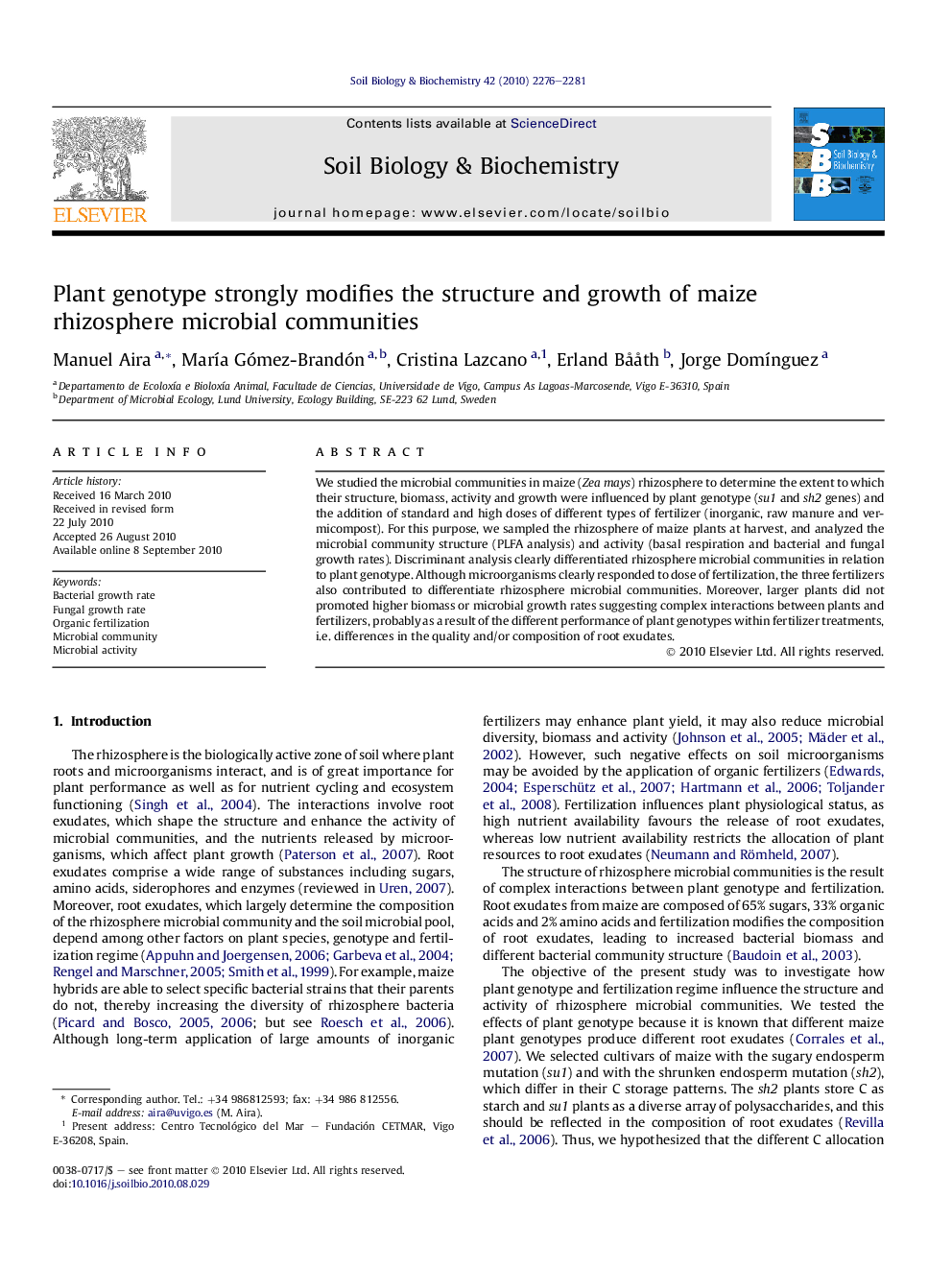| Article ID | Journal | Published Year | Pages | File Type |
|---|---|---|---|---|
| 2025381 | Soil Biology and Biochemistry | 2010 | 6 Pages |
We studied the microbial communities in maize (Zea mays) rhizosphere to determine the extent to which their structure, biomass, activity and growth were influenced by plant genotype (su1 and sh2 genes) and the addition of standard and high doses of different types of fertilizer (inorganic, raw manure and vermicompost). For this purpose, we sampled the rhizosphere of maize plants at harvest, and analyzed the microbial community structure (PLFA analysis) and activity (basal respiration and bacterial and fungal growth rates). Discriminant analysis clearly differentiated rhizosphere microbial communities in relation to plant genotype. Although microorganisms clearly responded to dose of fertilization, the three fertilizers also contributed to differentiate rhizosphere microbial communities. Moreover, larger plants did not promoted higher biomass or microbial growth rates suggesting complex interactions between plants and fertilizers, probably as a result of the different performance of plant genotypes within fertilizer treatments, i.e. differences in the quality and/or composition of root exudates.
Research highlights► Structure of rhizosphere maize microbial communities depended on plant genotype. ► Rhizosphere microbial communities differed under organic and inorganic fertilization. ► Interactions between plant genotype and fertilizers govern rhizosphere microorganisms.
